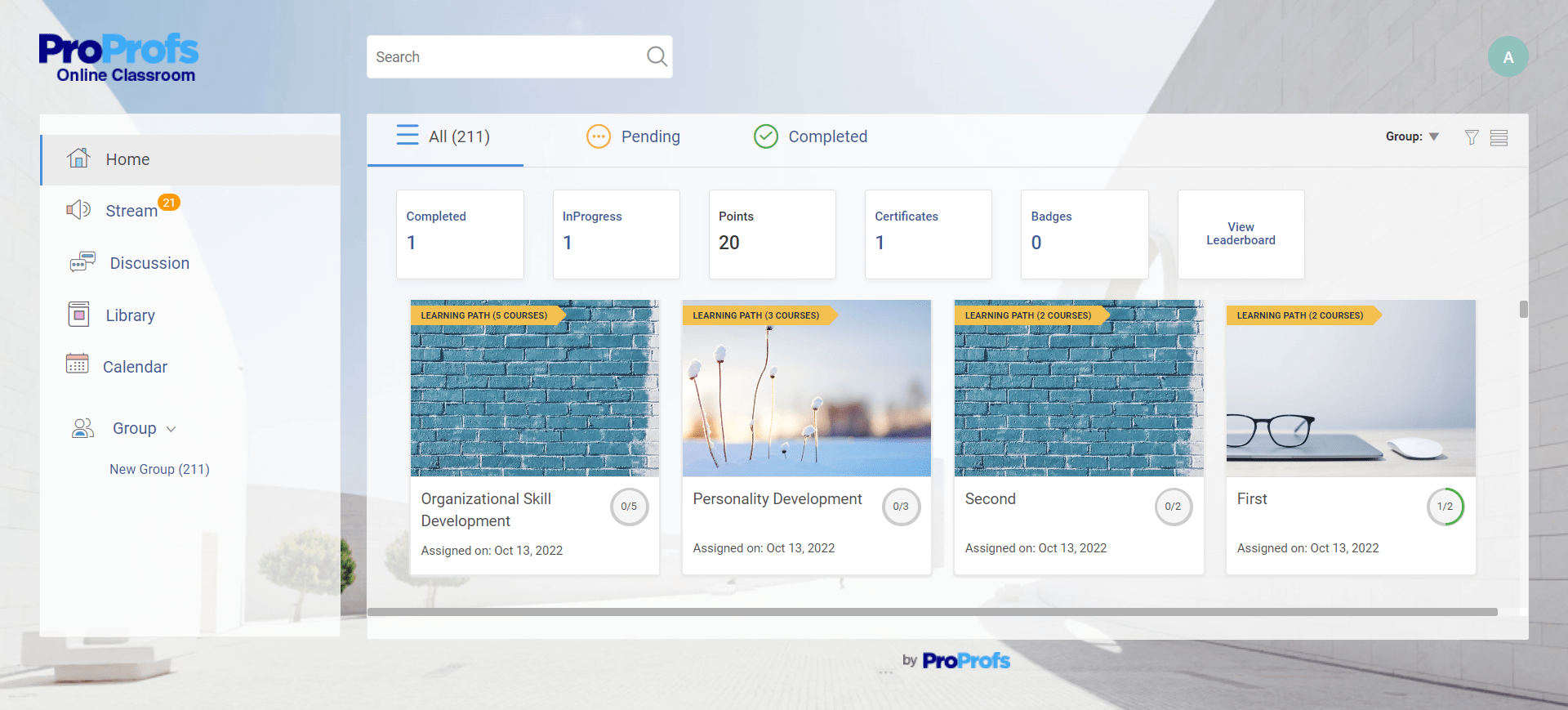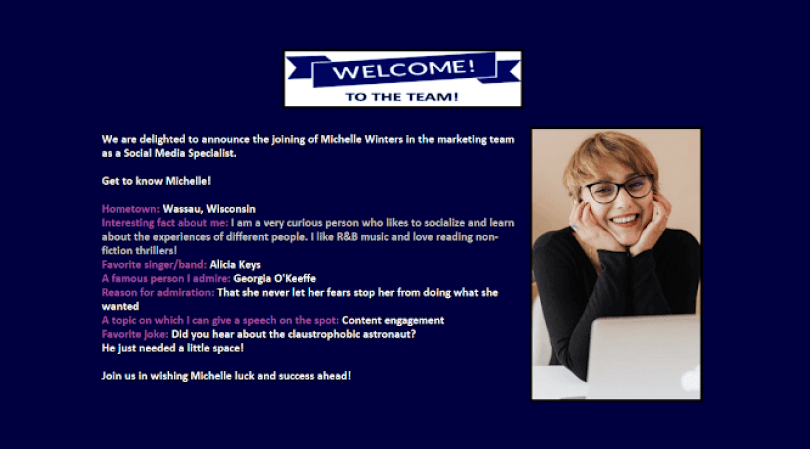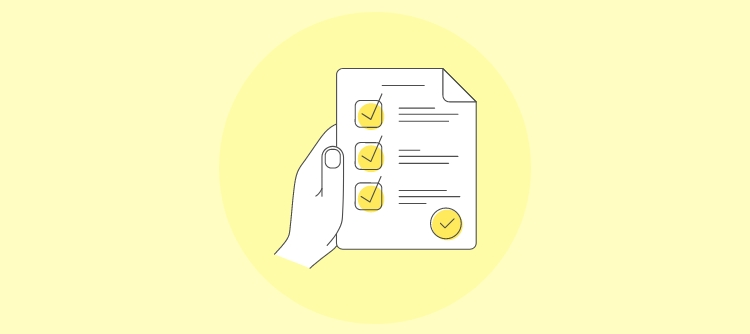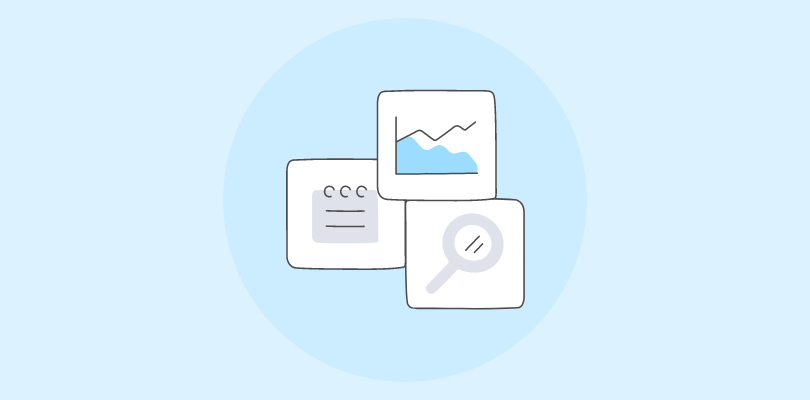An employee onboarding process is far more important than most people think. It’s not a mere formality done to comply with corporate customs. As Mitch Gray, the author of How to Hire and Keep Great People, says, “The ‘purpose’ element of onboarding is where you begin to lay the foundation of success for your new team member.”
Onboarding plays a crucial role in employees deciding whether to stay with a company or not and whether they remain committed to the organization.
However, traditional onboarding processes can be time-consuming and less impactful. This is where onboarding automation comes in.
In this post, I will discuss the essential elements of a successful onboarding process and explore how automation can make it a seamless and engaging experience for your new hires.
What Is an Employee Onboarding Process?
The employee onboarding process is a series of steps designed to welcome and integrate new hires into an organization. It typically starts before the first day and extends for months, ensuring they have the tools, knowledge, and connections to succeed in their role and become acclimated to the company culture, mission, and values.
In particular, this includes employees filling out all the documents as required by labor legislation and providing them with all the necessary tools to perform their jobs well.
During the process of employee onboarding, employees learn about the expectations from them regarding skills, communication style, and attitudes toward work.
Why Is it Important to Have a Strong Employee Onboarding Process?
An employee onboarding process is crucial for integrating new hires into an organization. Lacking a comprehensive onboarding strategy can lead to significant employee attrition and diminished efficiency. In fact, companies with robust onboarding processes improve new hire retention by an impressive 82%.
Let’s see why it’s crucial to have strong onboarding processes.
1. Increased Productivity and Efficiency
Well-structured onboarding procedures get new hires up to speed on the tools and technologies they’ll use. This includes setting up their workstation, providing access to necessary software, and training them on internal systems.
With the technical aspects ironed out, they can focus on their actual job duties and become more productive faster.
2. Improved Knowledge Retention
Onboarding is a chance to introduce new hires to the company’s codebase, development tools, and any specific technical documentation.
You can ensure they retain this information effectively by incorporating hands-on training and allowing them to ask questions.
3. Reduced Errors and Security Risks
Technical onboarding should cover security protocols and best practices for using company systems. This can help prevent data breaches and other security incidents.
New hires who understand how to access and use company resources properly are less likely to make mistakes that could compromise security.
4. Boosts Employee Engagement and Retention
A smooth onboarding process makes new hires feel welcome, valued, and prepared for their role. This can lead to higher employee satisfaction, engagement, and retention.
Technical hiccups and a lack of access to necessary tools can frustrate new hires. A well-designed onboarding process minimizes these issues and fosters a positive experience.
5. Streamlined Workflow and Communication
Onboarding introduces new hires to their team members, managers, and key stakeholders. It also helps them understand the company’s communication channels and workflow processes.
Establishing clear communication protocols from the start can avoid confusion and ensure everyone is on the same page.
What Are the Benefits of Employee Onboarding Automation?
As we’ve established, a well-structured onboarding program is essential for integrating new hires and setting them up for success.
Fortunately, technology can further enhance this process through automation. Automating tasks leads to an 18% improvement in new hire performance.
Let’s explore the benefits of employee onboarding automation:
1. Streamlined Workflows
Automation tools can handle repetitive tasks like pre-configuring new user accounts, provisioning access to relevant software licenses, and scheduling system training modules. This frees up IT and HR staff for higher-value activities.
2. Improved Data Accuracy
Manual data entry is prone to errors. 85% of data breaches are caused by simple human mistakes, which automation can significantly reduce. Automation ensures consistent and accurate data populations across various HR and IT systems, minimizing the risk of typos or inconsistencies.
3. Enhanced Scalability
Onboarding automation platforms can efficiently handle large volumes of new hires. They can automatically trigger workflows based on pre-defined parameters, making onboarding scalable as your company grows.
4. Self-Service Onboarding
Automated systems can provide new hires with self-service portals to access onboarding materials, complete required forms electronically, and schedule one-on-one meetings. This empowers them to take ownership of their onboarding journey.
5. Reduced Administrative Burden
“Automation is driving the decline of banal and repetitive tasks.” — Amber Rudd
Automating repetitive tasks reduces the administrative burden on HR and IT teams. This allows them to focus on more strategic initiatives, such as personalized mentoring and fostering a positive onboarding experience.
6. Improved Data Analytics
Automation platforms can generate reports and track employee progress through onboarding. This data can be used to identify bottlenecks and continuously improve the onboarding experience.
7. Integration with Existing Systems
Onboarding automation platforms often integrate seamlessly with existing HRIS (Human Resource Information System) and other internal systems. This allows for a smooth flow of data and avoids the need for manual data transfer.
Case study:
Essential Elements of an Effective Onboarding Process
Let’s talk about building an effective onboarding process! I firmly believe that welcoming new hires correctly is crucial for their success and overall satisfaction.
Here are some essential elements to consider when deciding on the onboarding process for new employees:
- Pre-boarding: This can start with a welcome package or email even before the first day. It sets the tone and gets new hires excited.
- Logistics: Ensure they have the tools and resources they need, from a working laptop to access to software and accounts.
- Orientation: Provide an overview of the company culture, mission, and goals. This is a chance to introduce them to key policies and benefits. Know the difference between onboarding and orientation .
- Training: Equip them with the knowledge and skills they need to perform their job effectively. This can include role-specific training, product knowledge, and soft skills development.
- Mentorship: Pair new hires with experienced colleagues who can provide guidance and support.
- Goal-Setting: Collaborate with them to set clear goals and expectations for the first 30, 60, and 90 days.
- Feedback: Regularly check in with new hires to see how they’re doing and address any concerns they may have.
Now that we’ve laid the groundwork for a successful onboarding experience, let’s be honest: even the most meticulously planned journeys can encounter roadblocks.
In the next section, I will walk you through some of the common challenges that can arise during employee onboarding and how to sail through them smoothly.
Get Free Employee Training Software — All Features, Forever.
We've helped 567 companies train 200,000+ employees. Create courses in under a minute with our AI LMS or use 200+ ready-made courses on compliance, harassment, DEI, onboarding, and more!
What Are the Common Employee Onboarding Challenges?
An employee onboarding process is supposed to be a smooth transition for new hires, but several common roadblocks can make it frustrating.
41% of HR professionals report a lack of structured onboarding. This causes several negative impacts, including:
- lower productivity (16%)
- greater inefficiencies (14%)
- higher employee turnover (12%)
- lower employee morale (11%)
- lower employee engagement (10%)
- lower employee confidence (10%)
- lack of trust within the organization (7%)
- missed revenue targets (6%)
So, what is the reason behind these employee onboarding challenges? I have done some research to identify these challenges.
- Lack of a formal process: Onboarding shouldn’t be haphazard. A structured program ensures everyone gets the information and support they need.
- Information overload: New hires shouldn’t be drowned in paperwork and policies on their first day. Chunking information and providing clear access to resources is key.
- Unclear expectations: New hires need to know what’s expected of them in their role and how their performance will be measured. Ambiguity can lead to confusion and frustration.
- Disorganized communication: Inconsistent communication from different people can leave new hires feeling lost. A central point of contact and clear communication channels help.
- Poor company culture fit: Onboarding is a chance to integrate new hires into the company culture. If they don’t feel welcome or supported, they may look for other opportunities.
- Neglecting feedback: Don’t assume new hires know how they’re doing. Regularly collect feedback and use it to adjust the employee onboarding process.
5 Employee Onboarding Steps to Follow
A structured onboarding process can be divided into several steps, starting with the new employees signing a contract and ending with a long-term commitment.
Here’s how it goes:
Step 1: Preparation
There’s often a time between signing the contract and the start date that employers can ideally use to prepare for onboarding. The essential steps are:
- Setting up the workplace. What equipment do the new employees need (desk, preconfigured PC, telephone, keys, business cards, name badges, passwords, etc.)
- Who will take care of the deployment?
Step 2: Sharing Details of Contact Persons
It’s always possible that future employees still have questions. Therefore, a list of contact persons with telephone numbers, email addresses, or business cards is helpful.
Step 3: Information Gathering
Even if new employees have already informed themselves about the company, its products/services, and its culture, they will undoubtedly be grateful to have the information available on demand.
An information folder usually contains:
- a company manual
- brochures
- further education and training catalogs
- an organizational chart, or a list of access data (email password, access to e-learning platforms, etc.)
Creative approaches to educating new hires on their new workplace include quizzes about the company, which playfully ask about important facts. Using such gamification elements in recruiting engages and motivates employees to learn.
Having a training course with step-by-step chapters that explain important aspects of their role with a well-defined learning path also helps bring much-needed clarity.
Step 4: Informing the Work Colleagues
You should inform the existing employees in advance about their incoming counterparts. Share a short description with interesting details about the new hires with the exact entry date and, if necessary, a profile photo on the intranet or by email.
Step 5: Assigning a Buddy/Sponsor
It makes sense to provide the new employees with a sponsor. These sponsors would be responsible for the new hires’ learning and other activities. It can be helpful to select an employee with a similar area of responsibility who introduces the future colleague to their place of work and answers any queries they may have.
After understanding the essential steps of employee onboarding, it’s natural to seek ways to streamline this process. Let’s explore how automation can make your onboarding workflow more efficient and effective.
How to Automate Your Employee Onboarding Workflow – 3 Steps
I have seen how industry experts handle automating the employee onboarding workflows. With a few steps, you can streamline the process and save time. Here, I’ll share three simple steps to help you automate your onboarding workflows effectively.
Step 1: Streamline Pre-Boarding Workflows
- Trigger on New Hire Notification: Leverage your Applicant Tracking System (ATS) to initiate the automation. When a new hire is marked as “hired,” this triggers the workflow.
- Automated System Updates: Use an integration platform to automate actions across different systems. Upon receiving the notification, the platform can:
- Create HRIS Profile: Automatically create a profile for the new hire within your Human Resource Information System (HRIS).
- Set Up User Accounts: Generate login credentials for the new employee in your identity management system.
- Welcome Email & Information Gathering: Send a pre-configured welcome email to the new hire. This email can include essential information like their start date, company policies, and a link to a form to collect details like their shirt size or preferred work environment (remote/office).

- Manager Involvement – Software Access Requests: Send an automated message to the new hire’s manager through your company communication platform (e.g., Slack, Microsoft Teams). This message prompts them to select the specific software applications the new employee will need to perform their job.
Step 2: Onboarding Day Automation
- Automated Scheduling & Reminders: Use a calendar management tool to schedule meetings and training sessions for the new hire’s first day. The system can also send automated reminders to the new employee and relevant parties beforehand.
Also Read: 10 Best Calendar Task Management Software in 2024
- Automated Badge & Equipment Setup: Integrate your onboarding software with your access control system. This allows for automatic badge creation and activation upon the new hire’s arrival. Similarly, equipment requests from the manager can be routed to the IT department for pre-configuration and setup.
- Welcome Package & IT Support: An automated system can prepare a welcome package with company swag and necessary office supplies based on the information gathered in the pre-boarding form. The IT service desk can also be notified to set up the new employee’s computer and provide initial login assistance.
Step 3: Post-Onboarding Automation
- Feedback & Progress Tracking: Schedule automated surveys or feedback forms to be sent to the new hire at key points throughout the onboarding process (e.g., first week, first month). This allows you to gauge their experience and identify any areas for improvement.
- Continued Learning & Knowledge Base Access: Provide the new hire with automated access to your company’s internal knowledge base or learning management system. This ensures they have the resources they need to continue learning and development beyond the initial onboarding phase.
With these steps, you can streamline your onboarding workflow, improve the new hire experience, and save valuable time for your HR team and managers.
Pro Tips For New Employee Onboarding Process
Below are some recommended practices you can follow to improve your new process of employee onboarding.
1. Make the Tasks Clear for Your New Hires
In practice, adaptation is always a reciprocal process: the employer sees if a new employee suits them, and employees assess their manager and decide about their tenure in the organization.
The employer must do the following:
- Work out the adaptation plan for new employees
- Clearly define the tasks, deadlines, and intermediate checkpoints
- Make the newcomers’ functions clear
This way, it’ll become easier for new employees to understand their organizational roles and responsibilities.
2. Discuss All the Pitfalls With Your New Employees
For example, you can often observe the following practice: when new employees go to work, they are “stuck” with responsibilities for two positions at once.
Such practice is more common in small businesses due to a lack of manpower and the absence of a proper hiring process.
This leads to:
- the disappointment of the new employees
- a mismatch of their expectations with reality, and as a result, leaving the company during the probationary period.
Solution: At the interview stage, discuss the candidate’s roles and responsibilities and reiterate this during onboarding.
Watch: Hiring & Interviewing
3. Understand the Goals of Adaptation
One of the purposes of adaptation is to assimilate new hires into an organization in the best possible way while reducing the organization’s costs.
Factors that can reduce an organization’s costs are:
- Fast induction. This means that the new employee is expected to reach the level of productivity required of them soon. Here, a standard onboarding platform can make all the difference.
- Reducing the number of errors due to effective training of new employees.
- Reducing the level of staff turnover as a result of the implementation of effective adaptation methods.
- Understand the Benefits of Adaptation
Having a new employee onboarding plan brings benefits to a company as well as an employee. Examples include compliance with company policies, clarity of job roles and company goals, and improved employee satisfaction and performance.
Click here to learn about the best employee onboarding plans and practices.
Get Free Employee Training Software — All Features, Forever.
We've helped 567 companies train 200,000+ employees. Create courses in under a minute with our AI LMS or use 200+ ready-made courses on compliance, harassment, DEI, onboarding, and more!
Make the Best of Your Employee Onboarding Process
After reading this blog, you should be able to follow the best onboarding process for employees. However, remember that onboarding cannot be seen just as a process of learning a new job. It involves immersing an employee in a new environment, understanding the rules of behavior and teamwork, accepting corporate norms, and establishing relationships with colleagues and partners.
The onboarding process for new employees can go in different ways: somewhere, a newcomer is thrown into the thick of things, hoping that they will figure it out themselves; somewhere, they are treated with care so that the stress experienced by the employee is minimal.
It’s essential to understand that the adaptation duration does not necessarily coincide with the course of the probationary period; it can take up to four months or more. A well-developed adaptation plan, mentoring, and training system will help speed it up.
Frequently Asked Questions
What are the employee onboarding stages?
Employee onboarding involves several stages: pre-boarding, where administrative tasks get completed before the first day; orientation, which includes introducing the company culture, policies, and team, usually accompanied by a hire orientation checklist to ensure that all necessary steps are taken; training, focusing on role-specific skills; integration, where the new hire starts collaborating with their team; and follow-up, ensuring ongoing support and development.
How to automate employee onboarding
Automate employee onboarding by using software to handle repetitive tasks like document management, compliance training, and scheduling. Use digital forms for paperwork, automated emails for communication, and online training modules for consistent training delivery. This streamlines the process, reduces manual errors, and saves HR and new hires time.
How does onboarding improve employee performance and workforce retention?
Effective onboarding improves employee performance by providing clear expectations, necessary resources, and immediate support. It enhances workforce retention by fostering a sense of belonging, reducing early turnover, and building employee engagement. A structured onboarding process helps new hires feel valued and confident in their roles, leading to higher job satisfaction and loyalty.
What are the 5 Cs of onboarding?
The 5 Cs of onboarding are Compliance, Clarification, Culture, Connection, and Check-Back. Compliance ensures legal and policy adherence. Clarification defines roles and expectations. Culture introduces company values and norms. Connection builds relationships with colleagues. Check-Back involves regular follow-ups to address any issues and provide ongoing support. Read more about the 5Cs of new hire onboarding.
How do you track employee onboarding success?
Track employee onboarding success by using metrics such as completion rates of onboarding tasks, new hire retention rates, time to productivity, employee feedback surveys, and performance evaluations. Regularly review these metrics to identify areas for improvement and ensure that the onboarding process effectively supports new employees in their transition.



 We'd love your feedback!
We'd love your feedback! Thanks for your feedback!
Thanks for your feedback!








